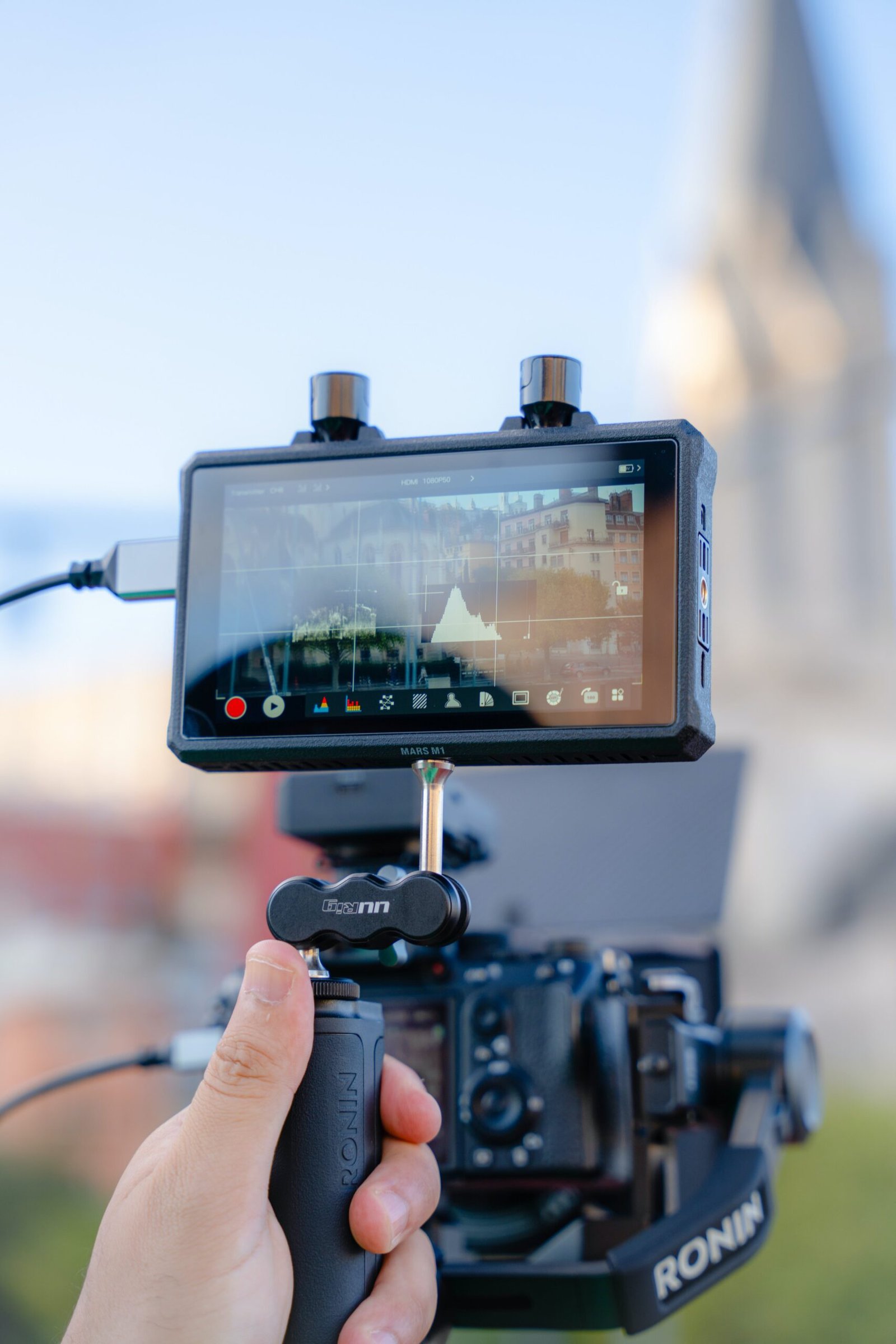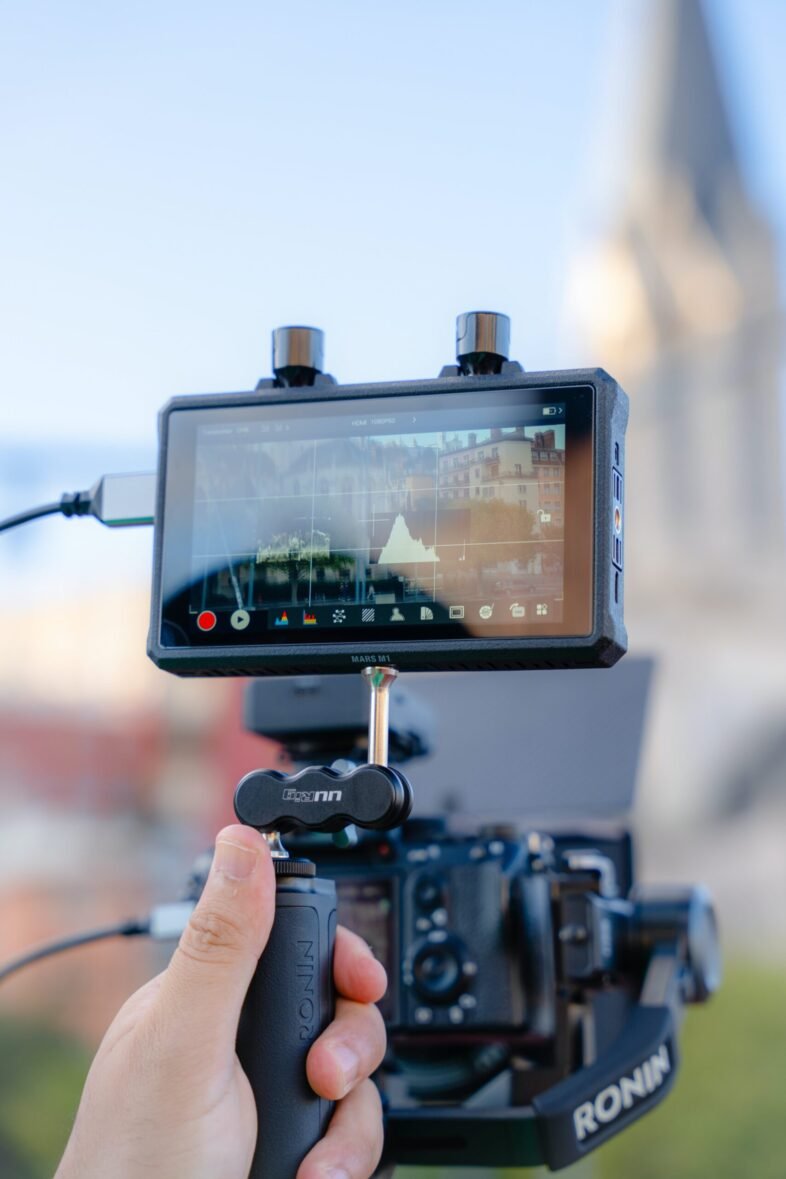In this article, you’ll discover the fascinating world of wireless video monitors and their potential to keep a watchful eye on your beloved pets. Have you ever wondered if these innovative devices come equipped with any special features specifically designed for pet detection? Well, you’re in luck! We’ll explore the various benefits and functionalities that wireless video monitors offer to ensure the safety and well-being of your furry friends. So, fasten your seatbelt and prepare to uncover the exciting world of wireless video monitors for pet detection!
Overview of Wireless Video Monitors
Wireless video monitors are devices that allow you to keep an eye on your surroundings remotely using a camera and a wireless connection. They have gained popularity over the years due to their convenience and ease of use. These monitors are commonly used for home security, baby monitoring, and even pet monitoring.
Definition of Wireless Video Monitors
Wireless video monitors, as the name suggests, are video monitoring systems that operate wirelessly. They consist of a camera that captures live video footage and transmits it wirelessly to a receiver or a smartphone app. This allows you to remotely view the live video feed from anywhere, as long as you have an internet connection.
Importance of Wireless Video Monitors
Wireless video monitors offer numerous benefits when it comes to pet detection and monitoring. They provide peace of mind to pet owners, allowing them to keep an eye on their furry companions even when they are away from home. These monitors help ensure the safety and well-being of pets by detecting their movements, sounds, and even recognizing their faces.
Types of Wireless Video Monitors
There are various types of wireless video monitors available in the market, each offering unique features for pet detection. Some monitors focus on motion detection, others on sound detection, and some even offer advanced features like face recognition. Different monitors cater to different needs and preferences, so it’s important to choose the one that suits your specific requirements.
Pet Detection Features in Wireless Video Monitors
Pet detection features play a crucial role in wireless video monitors, as they enable you to monitor and ensure the safety of your pets. These features are specifically designed to detect and track the movements, sounds, and even faces of your pets. Let’s explore the importance of pet detection features and the different types available.
Importance of Pet Detection Features
Pet detection features are essential for pet owners who want to ensure the well-being of their furry friends. These features allow you to be alerted when your pet is in distress, engages in potentially dangerous behavior, or simply needs your attention. By having these features in a wireless video monitor, you can provide timely care and attention to your pets, even when you’re not physically present.
Different Types of Pet Detection Features
Wireless video monitors offer various types of pet detection features to cater to different needs. The most common types of pet detection features include motion detection, sound detection, face recognition, and activity monitoring. Each of these features has its unique benefits and limitations, but combined, they provide a comprehensive solution for pet detection and monitoring.

This image is property of images.pexels.com.
Motion Detection
Motion detection is one of the primary pet detection features offered by wireless video monitors. It utilizes advanced technology to detect any movement within the monitored area. When a motion is detected, the monitor sends an alert or notification to your smartphone or the receiver, allowing you to quickly check the live video feed and assess the situation.
How Motion Detection Works
Motion detection works by analyzing the video feed captured by the camera. The monitor’s software algorithms constantly analyze the video frames for any changes or movements. When significant motion is detected, such as a pet moving across the room, the monitor sends an alert. Some wireless video monitors allow you to adjust the sensitivity of the motion detection feature to avoid false alarms.
Benefits of Motion Detection for Pet Detection
Motion detection is a valuable feature for pet detection as it can detect your pet’s movements and activities. It ensures that you are alerted whenever your pet enters specific areas or engages in behavior that may require your attention or intervention. Whether it’s your pet jumping on furniture or a potential safety concern, motion detection helps you stay informed and take appropriate action.
Limitations of Motion Detection for Pet Detection
While motion detection is a useful feature, it does have some limitations. It may trigger false alarms due to factors like moving curtains, shadows, or even small insects. Additionally, if you have multiple pets, it may be challenging to identify which pet triggered the motion detection alert. Despite these limitations, motion detection remains a valuable tool for pet owners.
Sound Detection
Sound detection is another essential pet detection feature found in wireless video monitors. It allows the monitor to pick up and analyze sounds within its range. When a specific sound threshold is detected, such as a pet barking or meowing, the monitor sends an alert to notify you of potential activity related to your pet.
How Sound Detection Works
Sound detection relies on the microphone built into the wireless video monitor. The monitor continuously listens for sounds within its range and uses algorithms to determine if the detected sound matches a predefined set of criteria. When a sound that matches the criteria is detected, an alert is sent, notifying you of your pet’s activity.
Benefits of Sound Detection for Pet Detection
Sound detection offers several benefits for pet owners. It allows you to be alerted when your pet makes specific sounds, such as barking excessively or scratching at doors. This feature helps you address any potential issues or concerns and provide prompt care or attention to your pet, even if you are not physically present in the same location.
Limitations of Sound Detection for Pet Detection
While sound detection is valuable, it does have its limitations. It may not always accurately distinguish between different sounds, leading to false alarms or missed alerts. Additionally, it may not detect sounds if the monitor is placed too far away from the source of the sound. Despite these limitations, sound detection can still be a useful tool for pet owners when combined with other pet detection features.

This image is property of images.pexels.com.
Face Recognition
Face recognition is a more advanced pet detection feature found in select wireless video monitors. It allows the monitor to identify and recognize the faces of your pets, providing a more personalized and accurate monitoring experience. Let’s take a closer look at how face recognition works and its benefits.
How Face Recognition Works
Face recognition technology uses complex algorithms and machine learning to analyze and identify unique facial features. By capturing and analyzing the patterns of your pet’s face, the monitor can recognize and differentiate your pet from other objects or people in the video feed. When a familiar face is detected, the monitor can trigger customized alerts or events.
Benefits of Face Recognition for Pet Detection
Face recognition offers several benefits for pet owners. It enables the monitor to accurately identify your pets, eliminating false alerts that may be triggered by other objects or movements. This feature also allows for more personalized monitoring since you can set specific settings or notifications for each recognized pet. With face recognition, you can ensure that you receive alerts relevant to your pets’ activities and well-being.
Limitations of Face Recognition for Pet Detection
While face recognition is a powerful pet detection feature, it does have its limitations. It may struggle to recognize pets’ faces in certain lighting conditions or if the pet is too far away from the camera. Moreover, face recognition requires a substantial amount of processing power, so it may not be available in all wireless video monitors. Despite these limitations, face recognition can greatly enhance the pet monitoring experience for those who have access to this feature.
Activity Monitoring
Activity monitoring is an essential pet detection feature that tracks and records your pet’s movements and behavior over time. It provides valuable insights into your pet’s activity levels, behaviors, and routines, helping you better understand their needs and well-being. Let’s delve into how activity monitoring works and its benefits.
How Activity Monitoring Works
Activity monitoring utilizes the camera and sensors of the wireless video monitor to track and record your pet’s movements and activities. The monitor collects data on factors such as the number of times your pet enters specific areas, the duration of their activities, and even their sleep patterns. This information is then presented in a user-friendly interface or app for you to analyze and interpret.
Benefits of Activity Monitoring for Pet Detection
Activity monitoring offers numerous benefits for pet owners. It allows you to track the daily routines and behaviors of your pet, helping you identify any changes or potential health concerns. Moreover, activity monitoring can provide insights into your pet’s exercise levels, ensuring they are getting enough physical activity to maintain their overall health and well-being.
Limitations of Activity Monitoring for Pet Detection
While activity monitoring is a valuable feature, it does have some limitations. It relies on the accuracy of the sensors and the data collection algorithms, which may sometimes lead to inaccurate or incomplete data. Additionally, interpretation of the activity data may require a certain level of understanding and context to accurately assess your pet’s well-being. Despite these limitations, activity monitoring can be a valuable tool for pet owners, especially when used in combination with other pet detection features.

This image is property of images.pexels.com.
Mobile App Integration
Mobile app integration is an increasingly popular feature offered by wireless video monitors. It allows you to access and control your monitoring system using a dedicated smartphone app. Let’s explore the advantages of mobile app integration for pet detection and the key features it offers.
Advantages of Mobile App Integration for Pet Detection
Mobile app integration provides convenience and flexibility for pet owners. With a dedicated smartphone app, you can access your wireless video monitor from anywhere, ensuring you never miss a moment with your pet. The app allows you to view the live video feed, receive alerts, control settings, and even talk to your pet through two-way audio functionality. This seamless integration enhances the overall monitoring experience and keeps you connected to your pet at all times.
Features of Wireless Video Monitors with Mobile App Integration
Wireless video monitors with mobile app integration offer a range of features to enhance pet detection and monitoring. These features may include real-time video streaming, customizable alerts, remote control of camera angles, and the ability to save and share video clips. Some monitors even offer additional features like scheduling, geofencing, and integration with other smart home devices. These features provide pet owners with the flexibility and control to tailor their monitoring experience according to their specific needs.
Considerations for Mobile App Integration in Wireless Video Monitors
When considering mobile app integration in wireless video monitors for pet detection, it’s important to ensure compatibility with your smartphone’s operating system. Additionally, check for app reviews and user ratings to ensure a reliable and user-friendly experience. Some monitors may require a monthly subscription fee for advanced features or cloud storage, so it’s important to consider the cost implications as well. Overall, mobile app integration can greatly enhance your pet monitoring experience and provide peace of mind when you’re away from home.
Cloud Storage
Cloud storage is a convenient and secure solution for storing and accessing recorded video footage from your wireless video monitor. It offers several benefits for pet owners who want to review past events or share video clips. Let’s explore the benefits, features, and considerations of cloud storage in wireless video monitors.
Benefits of Cloud Storage for Pet Detection
Cloud storage eliminates the need for physical storage devices, such as SD cards or external hard drives, to store recorded video footage. It provides a secure and reliable platform for storing and accessing your pet’s activities. Cloud storage also allows you to access recorded video clips from anywhere, using any device with an internet connection. This enables you to review and share important moments or incidents involving your pet, ensuring you never miss a beat.
Features of Wireless Video Monitors with Cloud Storage
Wireless video monitors with cloud storage offer features such as automatic video backups, customizable recording settings, and easy accessibility through dedicated apps or web portals. Some monitors may offer free cloud storage with limited storage space, while others may require a subscription for additional storage capacity or extended retention periods. Advanced features like video analysis or AI-powered event detection may also be available in certain cloud storage solutions, providing further insights into your pet’s behavior and well-being.
Considerations for Cloud Storage in Wireless Video Monitors
When considering cloud storage in wireless video monitors for pet detection, it’s important to assess the pricing plans and storage options offered by the manufacturer or service provider. Consider your storage needs and the length of time you would like to retain recorded footage. Some monitors may offer the option to use both cloud storage and local storage simultaneously, providing redundancy and flexibility. Additionally, ensure that the cloud storage service has adequate security measures in place to protect your data and privacy.
Night Vision
Night vision is a critical feature for pet detection in wireless video monitors, especially when monitoring your pets during low-light or nighttime conditions. It ensures that you can see and monitor your pet’s activities regardless of the lighting conditions. Let’s explore the importance of night vision, the different types available, and considerations for choosing a wireless video monitor with this feature.
Importance of Night Vision for Pet Detection
Pets are active creatures, and their activities don’t stop when the lights go out. Night vision allows you to monitor your pet’s behavior and well-being even in low-light or nighttime conditions. Whether your pet tends to explore at night or you need to keep an eye on them while you’re away, night vision ensures that you have a clear view of their activities, providing peace of mind and ensuring their safety.
Types of Night Vision in Wireless Video Monitors
Wireless video monitors offer different types of night vision technologies to suit various monitoring needs. The most common types are infrared (IR) night vision and low-light (LL) night vision. Infrared night vision utilizes infrared LED lights to illuminate the monitored area, capturing clear black and white video footage. Low-light night vision utilizes advanced image sensors and signal processing to enhance visibility in low-light conditions, providing more natural-looking color footage. Both types of night vision have their unique advantages, and the choice depends on your specific monitoring requirements.
Considerations for Night Vision in Wireless Video Monitors
When choosing a wireless video monitor with night vision for pet detection, consider the range and quality of the night vision capabilities. Ensure that the monitor can cover the desired monitoring area in low-light conditions without compromising image quality or clarity. Additionally, check for features like adjustable sensitivity and the ability to manually or automatically switch between day and night modes. By considering these factors, you can choose a wireless video monitor that provides optimal night vision performance for monitoring your pets.
Conclusion
Wireless video monitors with special features for pet detection offer numerous benefits for pet owners. By utilizing motion detection, sound detection, face recognition, activity monitoring, mobile app integration, cloud storage, and night vision, these monitors provide a comprehensive solution for monitoring and ensuring the safety of your pets. Whether you want to keep an eye on your pet’s daily activities or be alerted of any potential issues or concerns, wireless video monitors with pet detection features provide peace of mind and allow you to be a proactive and caring pet owner. Choose the right monitor that suits your specific needs and preferences, and enjoy the convenience and reassurance of having a reliable pet monitoring system at your fingertips.

Meet Penny Sterling, the editor behind the captivating content of our blog, “Wireless Video Monitor.” With a background in electrical engineering and a deep passion for technology, Penny has become a leading authority in the world of wireless video monitors. Her ability to distill complex concepts into accessible articles has made her a trusted guide for both tech enthusiasts and newcomers to the field. Penny’s unwavering commitment to research and staying up-to-date ensures that “Wireless Video Monitor” remains an authoritative source for reliable information. Get ready to embark on a journey of wireless video monitor exploration with Penny Sterling as your knowledgeable and dedicated mentor.


